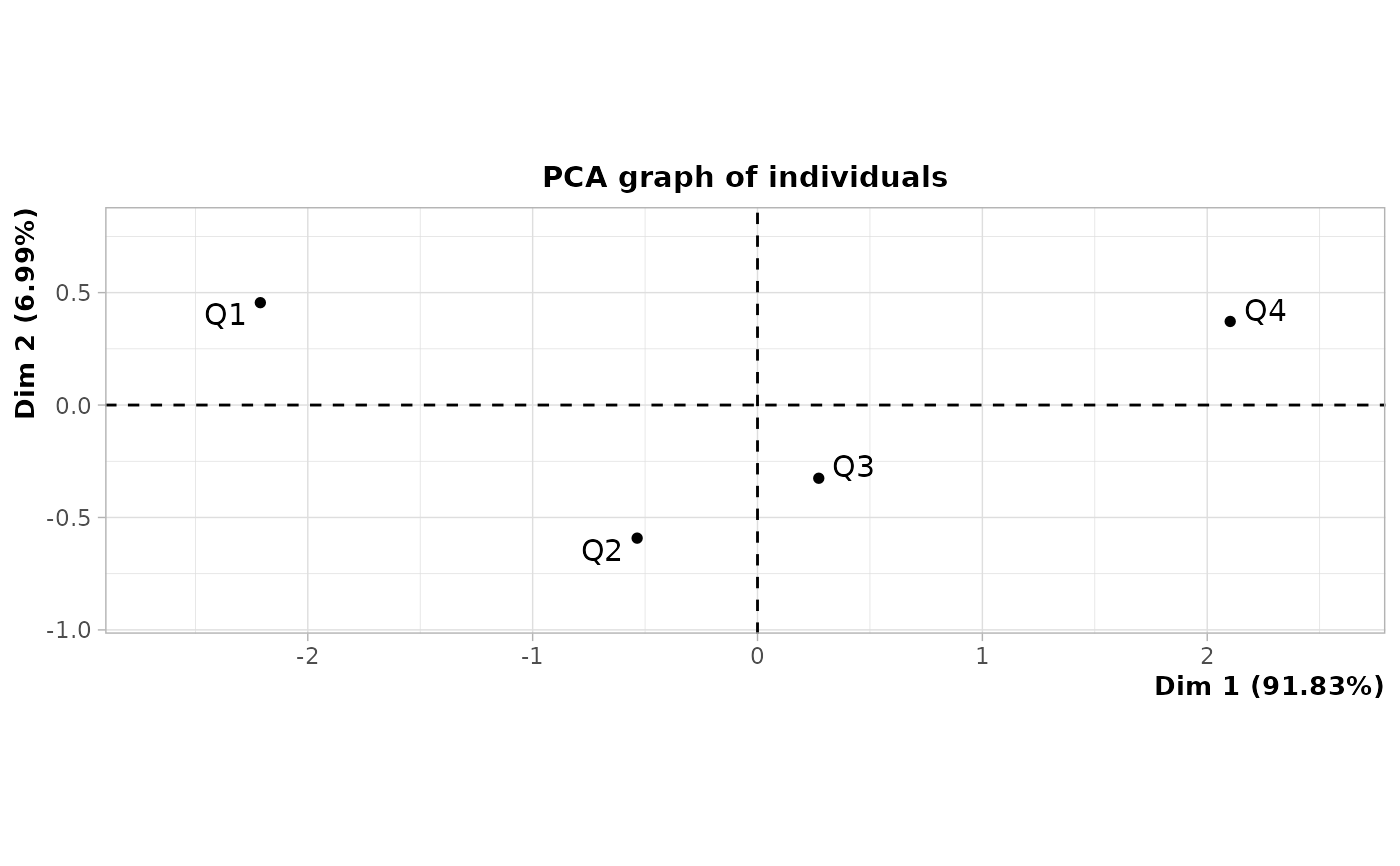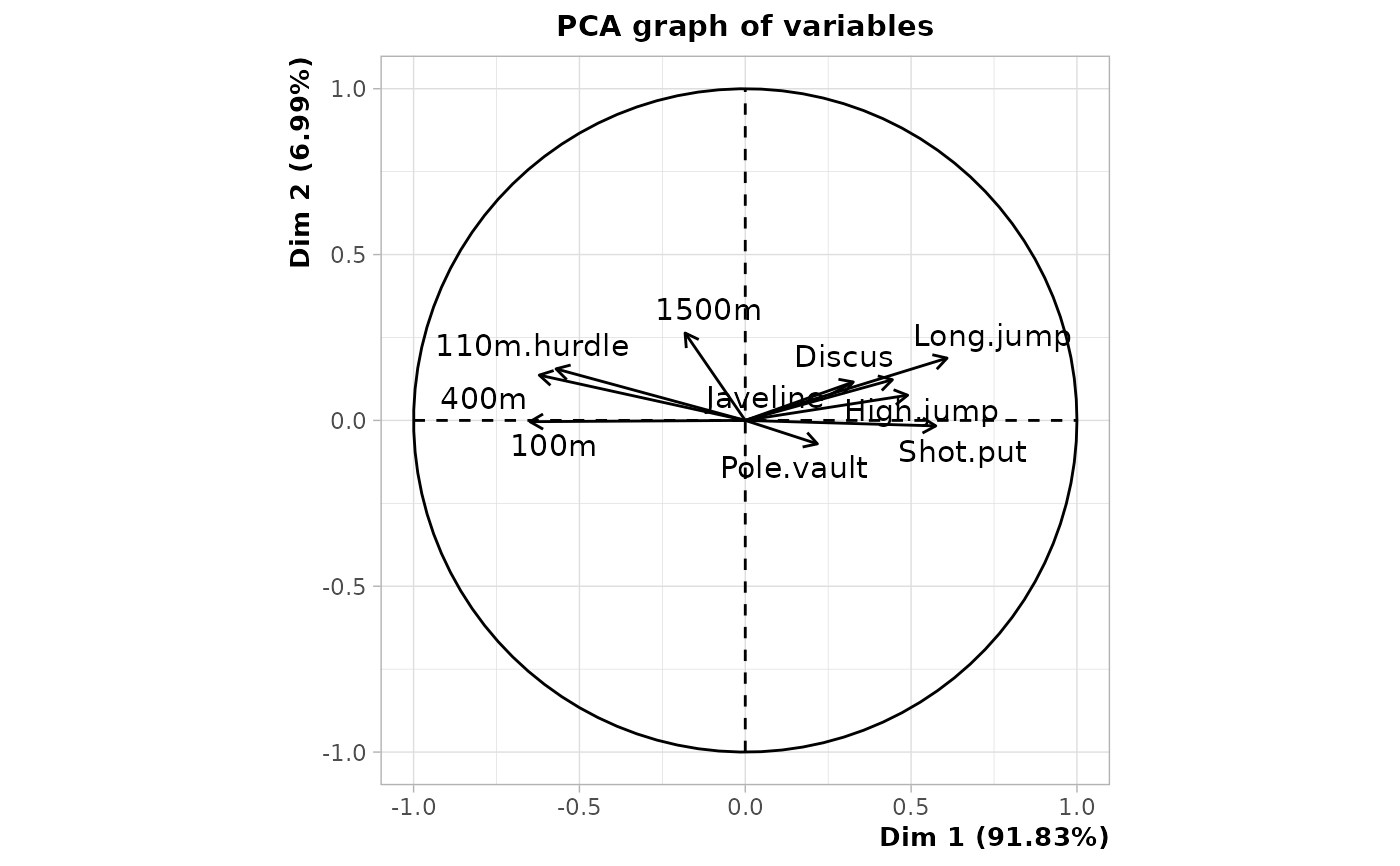Between-class Principal Component Analysis
bcPCA.RdBetween-class Principal Component Analysis
bcPCA(data, class, row.w = NULL, scale.unit = TRUE, ncp = 5)Arguments
- data
data frame with only numeric variables
- class
factor specifying the class
- row.w
numeric vector of row weights. If NULL (default), a vector of 1 for uniform row weights is used.
- scale.unit
logical. If TRUE (default) then data are scaled to unit variance.
- ncp
number of dimensions kept in the results (by default 5)
Details
Between-class Principal Component Analysis consists in two steps :
1. Computation of the barycenter of data rows for each category of class
2. Principal Component Analysis of the set of barycenters
It is a quite similar to Linear Discriminant Analysis, but the metric is different.
It can be seen as a special case of PCA with instrumental variables, with only one categorical instrumental variable.
Value
An object of class PCA from FactoMineR package, with the original data as supplementary individuals, and an additional item :
- ratio
the between-class inertia percentage
References
Bry X., 1996, Analyses factorielles multiples, Economica.
Lebart L., Morineau A. et Warwick K., 1984, Multivariate Descriptive Statistical Analysis, John Wiley and sons, New-York.)
Examples
library(FactoMineR)
data(decathlon)
points <- cut(decathlon$Points, c(7300, 7800, 8000, 8120, 8900), c("Q1","Q2","Q3","Q4"))
res <- bcPCA(decathlon[,1:10], points)
# categories of class
plot(res, choix = "ind", invisible = "ind.sup")
 # variables in decathlon data
plot(res, choix = "var")
# variables in decathlon data
plot(res, choix = "var")
 # between-class inertia percentage
res$ratio
#> [1] 0.2673959
# between-class inertia percentage
res$ratio
#> [1] 0.2673959